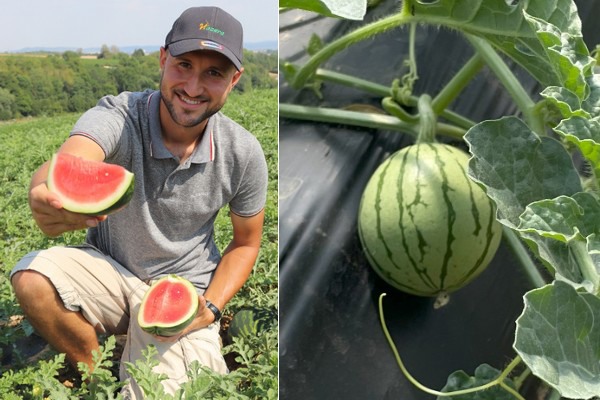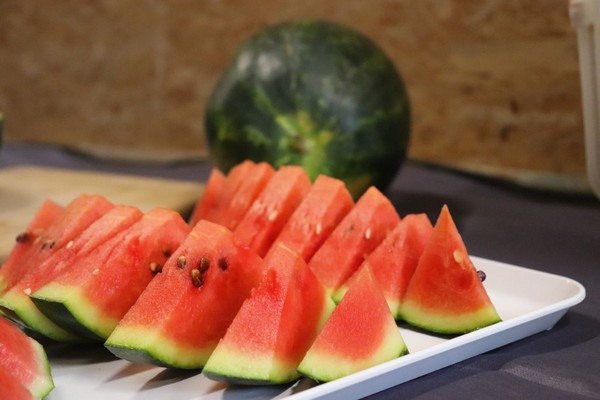In the wake of climate change, tropical fruits, including watermelons, have also been gaining in importance in the German cultivation for several years. Obsthof Holderrieth in Schwaigern has also been growing the summer thirst quencher since 2018 and markets the watermelons both through its own farm shop and to selected Edeka branches and wholesalers. Despite high price competition with imported goods and sometimes extreme fluctuations in demand, the watermelon has become an integral part of his product portfolio, owner Tobias Holderrieth tells us.
Due to the predominantly wet and cold weather, this year's melon harvest just began at the end of July, around two weeks later than usual. Holderrieth summarises that sales were also very volatile this year. "In week 34, for example, it was a little cooler again, which was immediately noticeable in sales. There will probably still be goods available until mid-September. Until then, it will generally be more difficult to sell larger quantities due to the generally cooler weather. In this respect, watermelon is ultimately a summer product beyond comparison." Overall, the yields so far are about average, Holderrieth continues.

Fruit producer Tobias Holderrieth has been cultivating watermelons since 2018. The fruit mainly grows outdoors on black mulch film. At the start of the season, Holderrieth also devotes himself to growing melons in the tunnel.
Inflation and price competition
The watermelons and mini watermelons find their way to consumers either via the farm shop or regional retailers. "Prices have been satisfactory this year. However, it remains difficult to compete with low-priced imported melons on the market." Inflation made things even more difficult this year. "In direct marketing, the current price per kilo is EUR 1.80/kg, which is relatively high. Due to inflation, we have also reduced our cultivation capacities somewhat this year, although we have not observed any significant reluctance to buy so far."
In terms of marketing, the strong fluctuations in demand are particularly challenging, continues Holderrieth. "With apples, for example, there is a certain continuity in marketing. With melons, on the other hand, depending on the weather, the quantities either flow away very quickly or hardly at all. There is no middle ground in this respect. To that extent, our home-grown watermelons are a great but extremely volatile product segment," he concludes.

Watermelons usually weigh up to 4 kg. However, growing other melon varieties such as Galia and Charentais is difficult, says Holderrieth, based on his own trial results.
Photo credit: Obstbau Holderrieth GbR
For more information:
Tobias Holderrieth 
Obstbau Holderrieth GbR
Lerchenberghöfe 2
74193 Schwaigern
Tel: 07138/920625
Fax: 07138/920627
E-Mail: info@obstbau-holderrieth.de
Internet: www.obstbau-holderrieth.de
